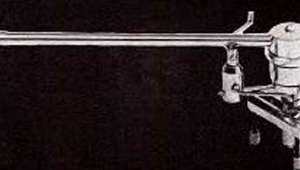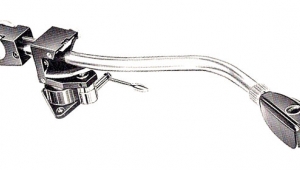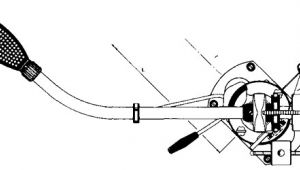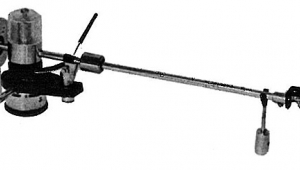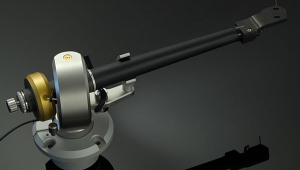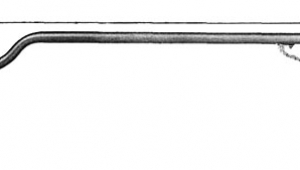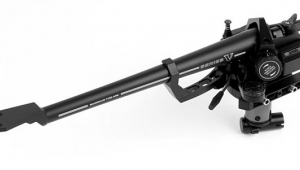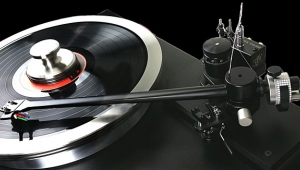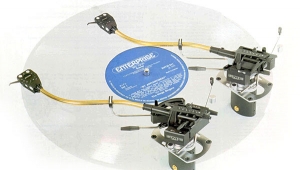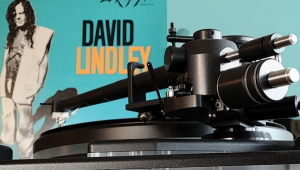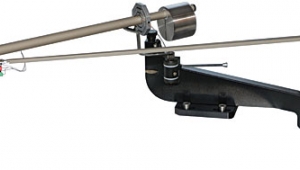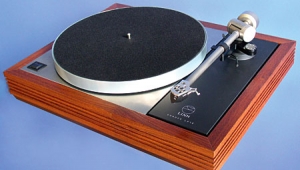| Columns Retired Columns & Blogs |
Graham Model 2.0 tonearm Page 3
But the Graham 2.0's bass response was, in every way, the equal of the Immedia's—meaning that the 2.0's new mounting platform and VTA shaft-locking system were doing their jobs as planned. As before, the Graham's other strong suits remained superb image focus, detail, depth, dimensionality, transient speed, dynamics, and stability. On live recordings like Belafonte at Carnegie Hall, Belafonte's voice maintained a holographic presence that was eerie. When the audience applauds, Carnegie Hall's U-shaped seating arrangement spread before me with a thrilling, convincing three-dimensionality. If you're an imaging and detail connoisseur, the Graham should be on your (very) short list—along with the Immedia. While these two arms don't sound identical, they are close sonic relatives.
It's in the mids and highs that some listeners have a problem with the Graham "sound" (ditto the Immedia). For some listeners, the incredible top-to-bottom detail the arm retrieves comes at a price: There's a lack of richness and bloom in the midrange, and a too-literal portrayal of what's really happening: a stylus being dragged through a record groove. It's not that you actually hear that, but there is, for some listeners, a residual "mechanicalness" to the sound. Some listeners hear a "brightness zone"; they say it renders the sound too analytical for their tastes—sort of like the negative rap on Wilson Audio's WATT/Puppies.
That analytical quality, combined with a lack of bottom-end authority, led some detractors to declare the sound of the Graham 1.5t "threadbare." I didn't hear it that way then, and I certainly don't now. My long-term listening with a variety of cartridges convinces me that the Graham 2.0 is one of the most neutral, revealing cartridge carriers you can buy, though I wouldn't mind a bit more bloom and richness—a bit more generosity—in the mids and upper mids. And here's where things get thorny. The difference cabling makes with low-level signals is really amazing—even for someone who has experienced the tremendous effects cabling can have on a system's overall sound.
Phono Cables
Bob Graham sent me armwands wired with two different kinds of copper wire—same alloy, different construction—and one with his proprietary silver cable. I'm not one of those audiophiles who thinks "silver = bright," and I don't find the silver armwand bright—just very detailed and transparent. But on some level, the copper wand offered a sense of relief from the silver's literal, perhaps more accurate, presentation. Yes, there was somewhat less detail, transparency, and extension, but there was also more of a cushiony richness. Is one sound "bright"? Is the other "congested"? Does one sound "more like live music"? (Now there's a meaningless expression—when all of the other components in the chain are chipping in their effects, and when recording quality varies so widely.) We're talking about sonic "tendencies" here.
I ended up doing most of my reviewing with what Bob Graham considers his best-sounding Deluxe, silver-wired wand, and with his beautifully built DIN/WBT RCA-plug interconnect (available for an additional $500). The arm does not come with interconnects. But then, a few weeks into the review process, I received a $795, 1.5m DIN/RCA interconnect from Hovland, a company best known for its capacitors (footnote 1). I already had on hand another very expensive set made by Precision Interface Technology (associated with FM Acoustics) (footnote 2).
The Hovland's connector looks ridiculous. It features what I believe is a discontinued Tiffany DIN connector, which lacks a right-angle bend; it's difficult to position with the Graham's jack, and uses what look like the sort of cheap, generic, "vintage" RCA plugs you'd find on an old Stromberg-Carlson in your grandma's attic. But—replace the Graham interconnect with the Hovland, and the sound is transformed.
- Log in or register to post comments
